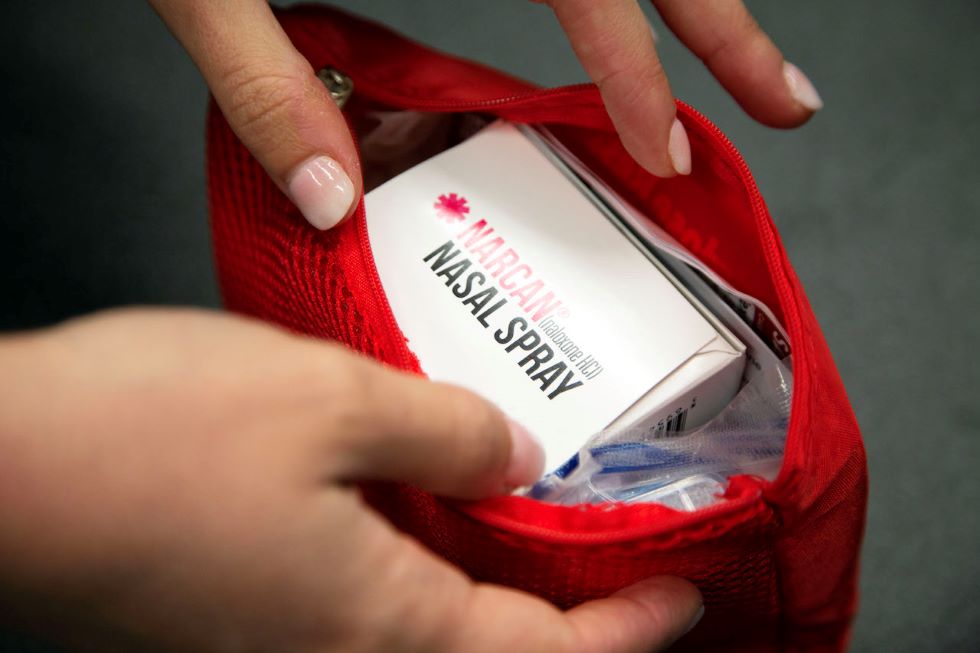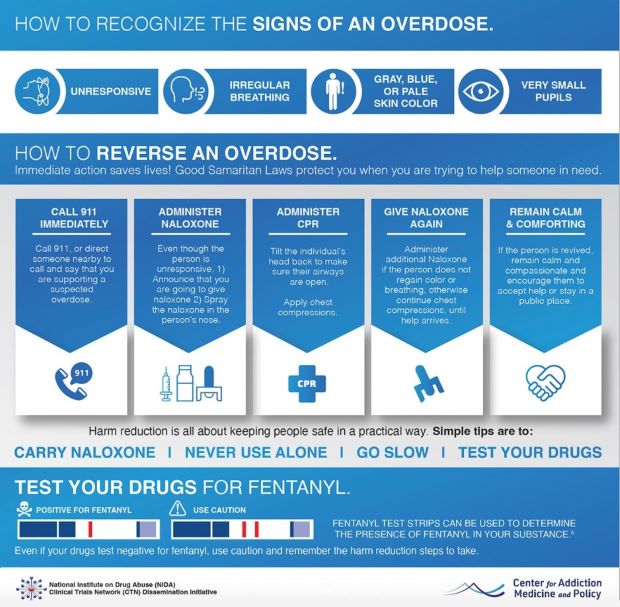
Last updated on October 21st, 2024 at 04:51 pm
Naloxone is a powerful tool for preventing deaths from opioid overdoses. First responders and health care providers use this medication in their day-to-day work, but anyone can keep it on hand and save lives, too.
What is naloxone and how does it work?
Naloxone is an “opioid antagonist” medicine. It attaches to opioid receptors in the brain to reverse and block the effects of opioids. Opioids include heroin, fentanyl, oxycodone, and morphine, to name a few. When someone overdoses on opioids, their breathing can slow or stop altogether. Naloxone can quickly and safely restore regular breathing.
Naloxone can be given to someone you think might be having an opioid overdose. Anyone can carry naloxone. It is an especially good idea to have naloxone nearby if you or someone you know might use drugs. Even though naloxone only reverses overdoses caused by opioids, it should be given any time you think someone may be overdosing from any drug. That’s because many other substances—such as cocaine, counterfeit prescription pills, and methamphetamine—may be contaminated with opioids.
If you are concerned that giving naloxone can unintentionally harm someone, don’t worry: Naloxone does not affect people who don’t have opioids in their system.
Common signs of an opioid overdose include:
- Slow or shallow breathing
- Unconsciousness
- Very small pupils
- Inability to speak
- Vomiting
- Faint heartbeat
- Limp arms and legs
- Pale skin
- Purple lips and fingernails
Naloxone can be given as a nasal spray or an injection. The medicine is fast acting but only works in the body for 30 to 90 minutes. It may take multiple doses to counteract stronger opioids such as fentanyl. A pharmacist can provide more information on how to use it properly.
If you believe someone may be experiencing an opioid overdose, start by calling or having someone call 911. Follow the instructions that come with the naloxone medication and/or follow the instructions from the 911 operator. Stay with them until emergency help arrives.

For a full-size infographic, click here.
Getting naloxone
Hospitals carry naloxone and, increasingly, so do first responders, including police and firefighters. But you can also get naloxone from a doctor or pharmacist, as well as from local health departments and public health clinics. Ask your pharmacist whether your insurance can cover the cost of naloxone. Some local distribution programs can also provide naloxone at low or no cost and provide training on how to use it.
There can be barriers to getting naloxone, including cost, supply, stigma, or lack of information about local laws. People who need naloxone may not always be able to get it. The availability of naloxone may depend on your area. Check your state’s laws on getting naloxone from a pharmacist. Some states have “Good Samaritan laws” that can protect you and the person overdosing from drug possession charges when you call 911. These laws encourage people to seek medical help in the event of an overdose.
NIDA supports research to address this and other aspects of the drug overdose crisis.
After an overdose
As effective as naloxone is, this lifesaving medicine specifically works by reversing an opioid overdose and does not treat a substance use disorder (SUD). SUDs, including opioid use disorder, are chronic, treatable conditions from which people can recover. People with SUDs have trouble stopping drug use despite the negative consequences. People who survive an opioid overdose are still at risk for continued substance misuse. FindTreatment.gov can help find treatment for SUDs across the United States.
